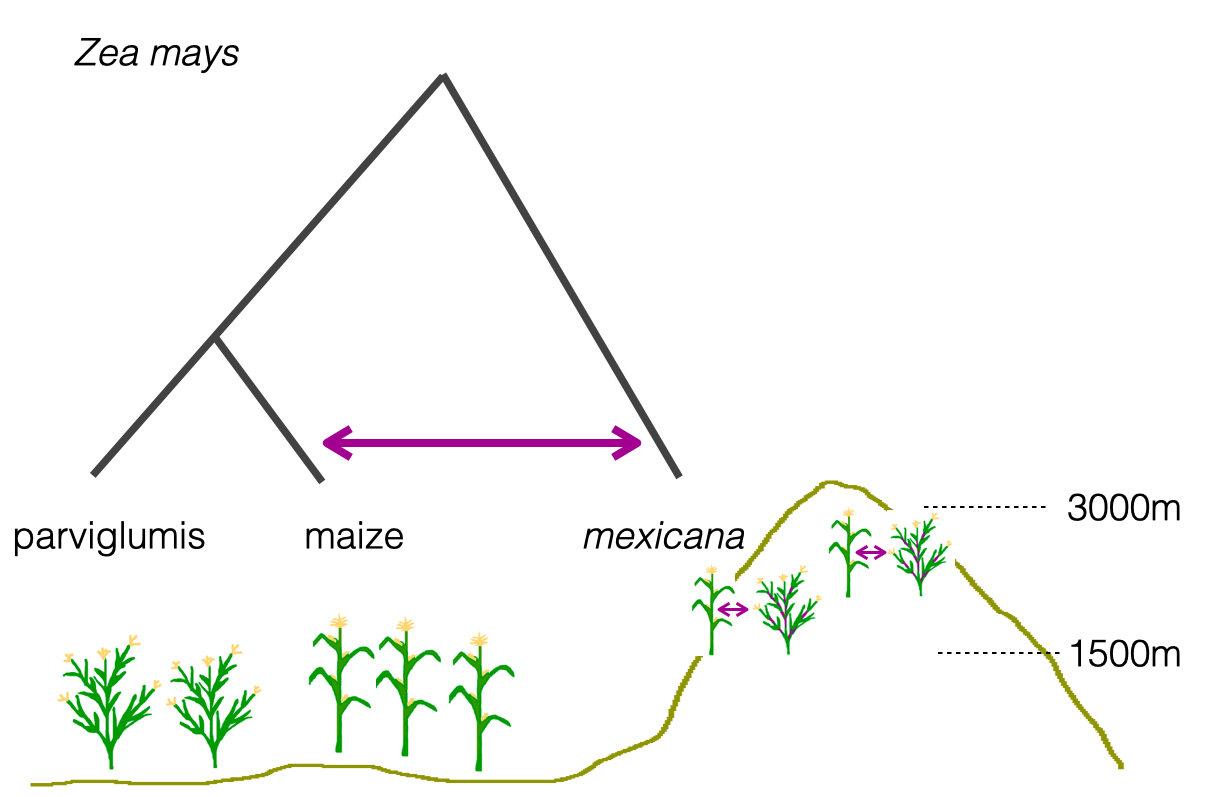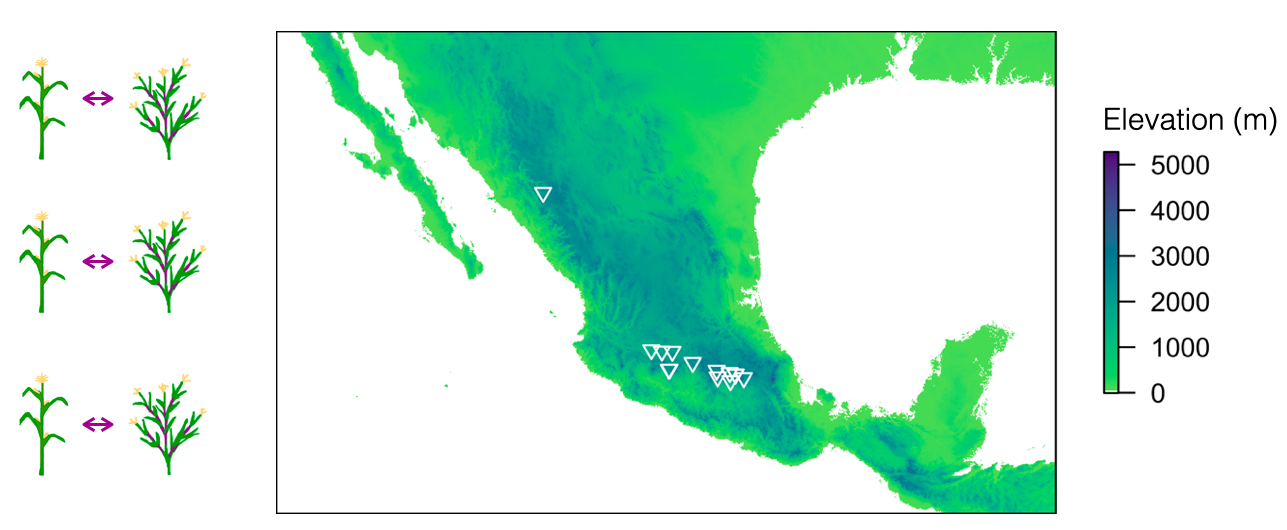High-Altitude Adaptation in Admixed Maize
 Cartoon of maize x mexicana admixture.
Cartoon of maize x mexicana admixture.
Read the preprint here! Calfee E, Gates D, Lorant A, Perkins MT, Coop G, & Ross-Ibarra J. Selective sorting of ancestral introgression in maize and teosinte along an elevational cline. doi: https://doi.org/10.1101/2021.03.05.434040
This research project is about the evolutionary consequences of admixture between domesticated maize and a wild-relative, mexicana, which is endemic to the highlands of Mexico. Maize was domesticated from parviglumis about nine thousand years ago in the valleys of Mexico. When it was brought to higher elevations, it encountered and cross pollinated with a more distantly-related teosinte, mexicana.

This admixture may have helped maize rapidly adapt to new selection pressures at high elevation (e.g. higher UV intensity, colder temperatures and shorter growing season). We test this hypothesis by looking for signatures of adaptive introgression shared between maize populations (landraces) sampled across a wide geographic range.
Using genomic data from 14 pairs of side-by-side maize and mexicana populations, we ask:
- Do we find evidence of adaptive introgression from mexicana, especially at higher elevations?
- Which loci adaptively introgress or maintain barriers to gene flow and do they vary across populations or environments?

One challenge in our analysis is that maize can be moved large distances by farmers. We account for this non-independence between populations by incorporating the genomewide background covariance in ancestry between populations into our null models.
Stay posted for more results!